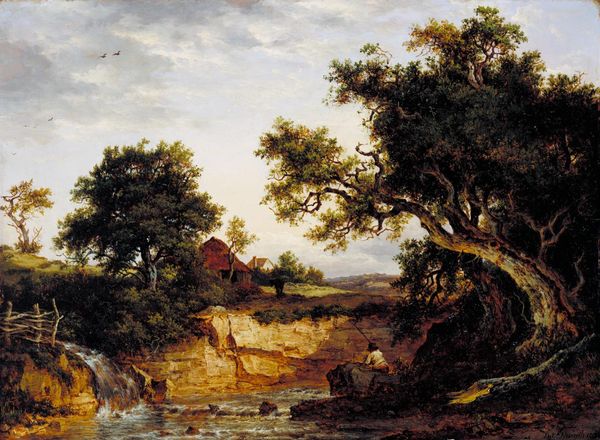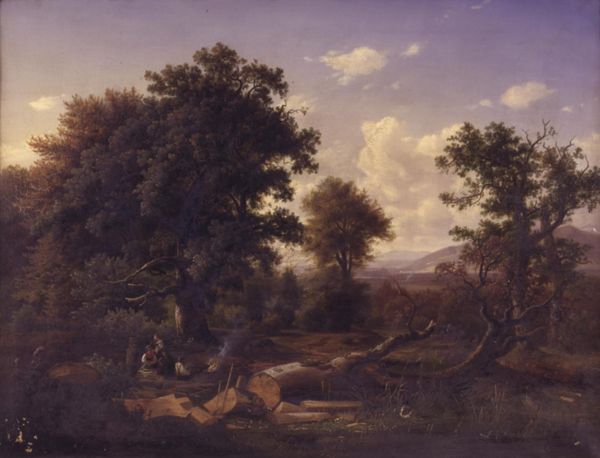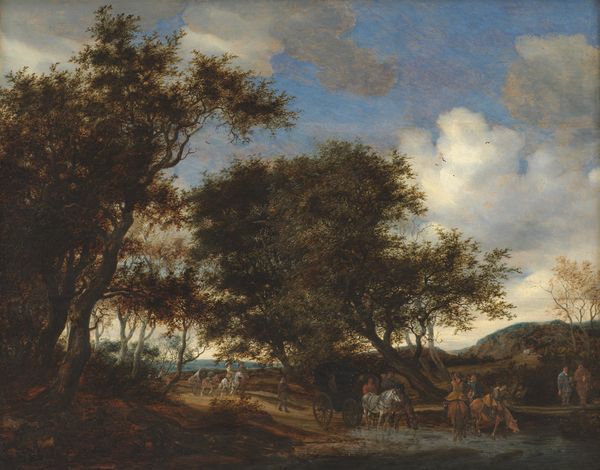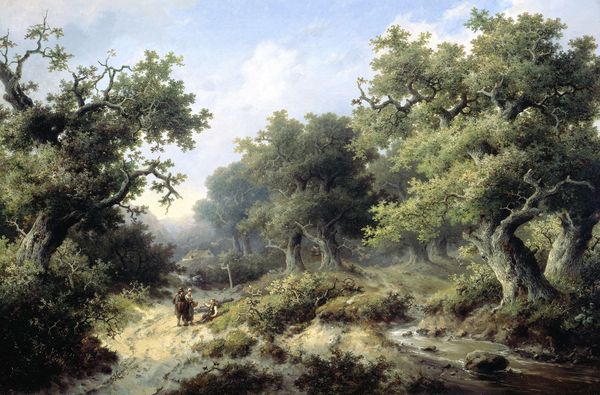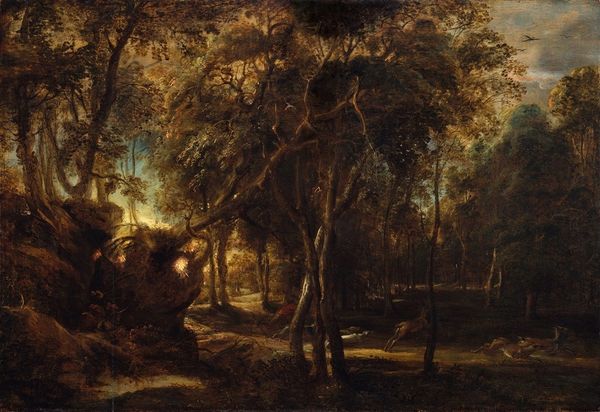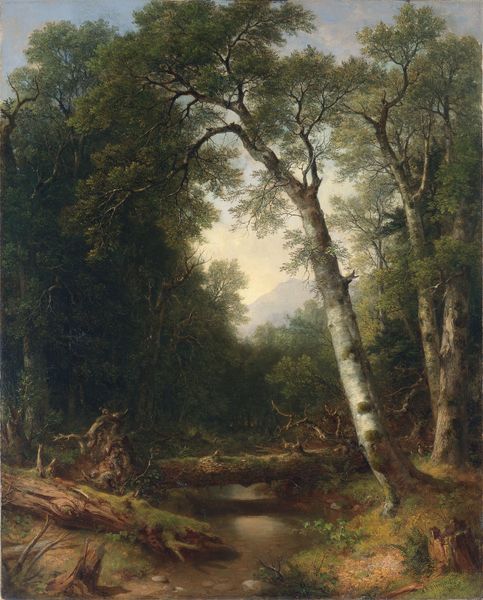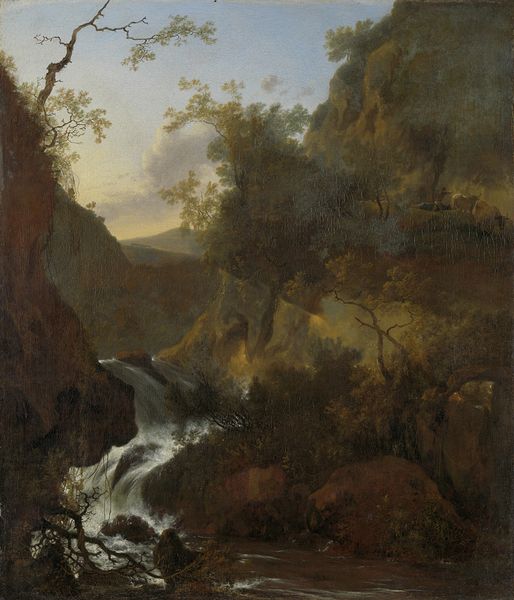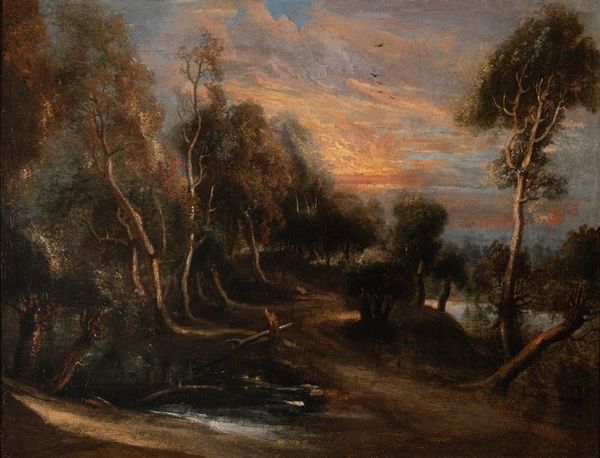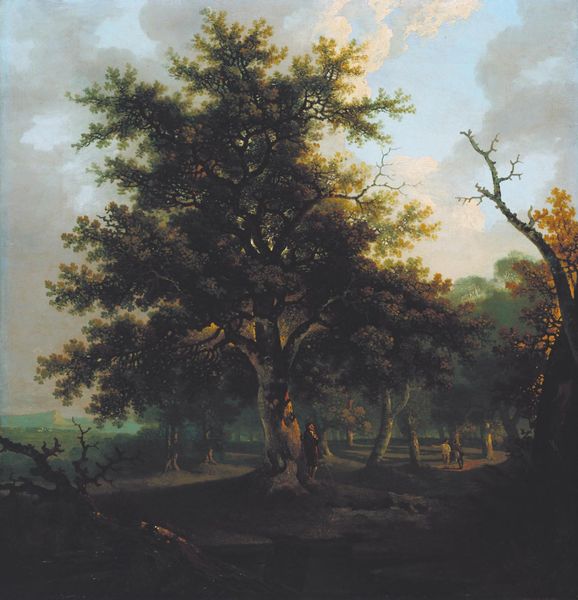
Copyright: Public domain
Editor: This is "Landscape with a Stream" painted in 1851 by Andreas Achenbach, using oil paint. I’m immediately drawn to the contrast between the churning stream and the still forest. How would you approach interpreting this piece? Curator: Given Achenbach's context, let’s consider the material production of this painting, how were landscapes like this consumed? Editor: Consumed? Like, literally eaten? Curator: Not eaten! But consider how these paintings were bought, displayed, and became part of a rising middle-class market for art. It reflects an increasing public fascination with the natural world, fuelled by industrialization which both distanced people from, and commodified nature. What part does labor play? Editor: Hmm…I notice the lone figure on the path – is he part of that ‘labor’ aspect? Curator: Possibly. Or maybe, a suggestion that this landscape is a site of resource extraction, like lumber. How might Achenbach's brushstrokes, the very materiality of the paint, reinforce this reading? Think about the impasto. Editor: The impasto gives the stream a dynamic feel…maybe contrasting with a sense of industry subtly encroaching? It's interesting how a painting can hold so many layers of meaning tied to its time! Curator: Exactly! It moves beyond just aesthetic pleasure and into understanding how art serves economic and social purposes. Editor: I see that now, especially understanding where, how and for whom the landscape was produced. Thank you.
Comments
No comments
Be the first to comment and join the conversation on the ultimate creative platform.

